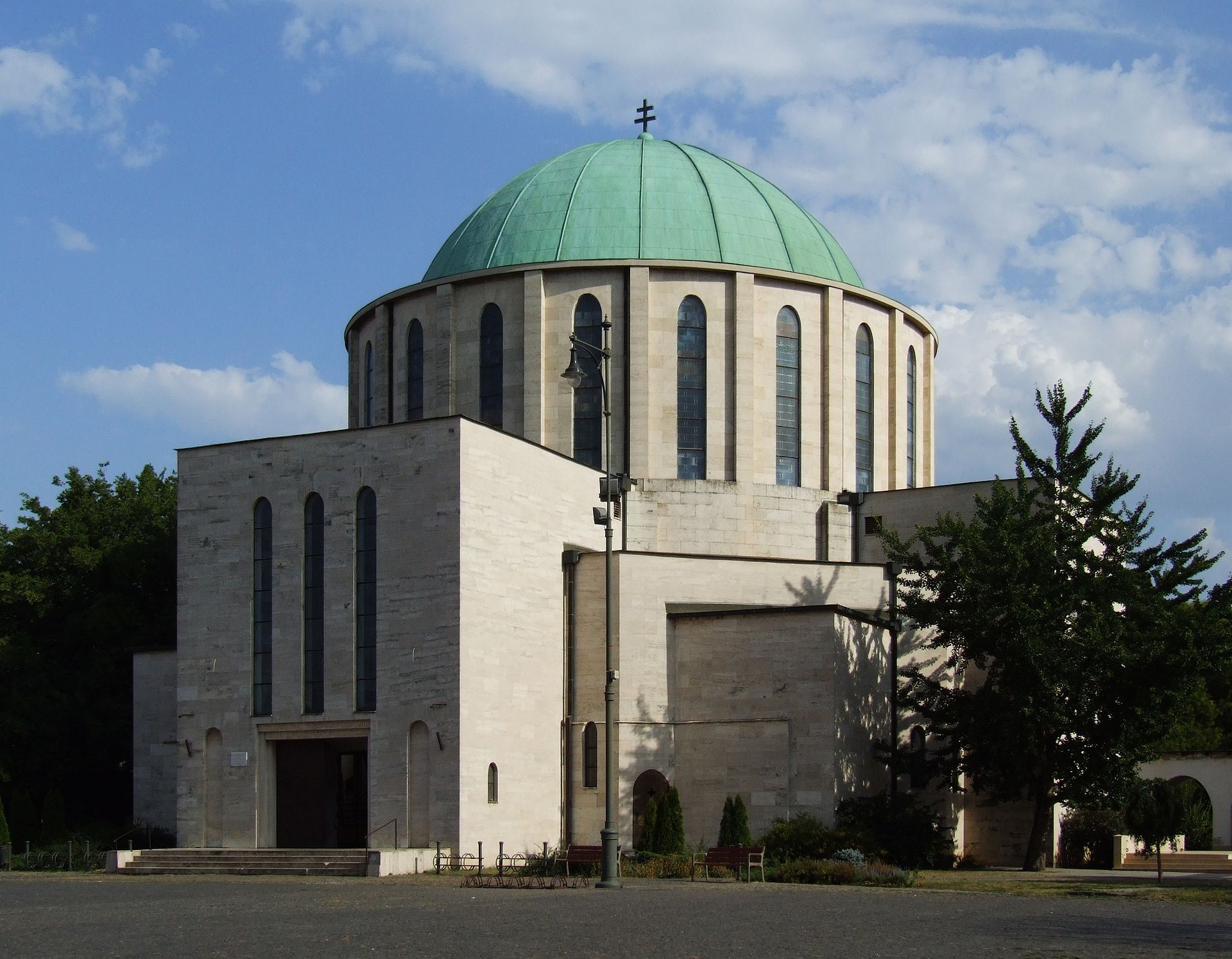1926-1976-2026 – Official Memorial Policy – Votive Church of Mohács
Fact of the Hungarian figure „The vast cemetery of our national greatness” – The Battle of Mohács”
Part of the „The myth of national disaster” topic
The Mohácsi Fogadalmi Templom (Votive Church of Mohács) is not only a symbol of remembrance for the Battle of Mohács but also a reflection of Hungary’s complex historical memory and its evolution over the centuries. The church was first dedicated on the 400th anniversary of the battle, in 1926, in a ceremony marked by the presence of Regent Miklós Horthy and the Turkish ambassador. This joint dedication highlighted the intertwined histories of Hungary and Turkey, acknowledging the shared legacy of the Ottoman period while promoting reconciliation between the two nations.
The 1926 dedication was a significant event in Hungarian national memory, occurring at a time when the country was grappling with the aftermath of World War I and the Treaty of Trianon. The Votive Church, in this context, became a potent symbol of national resilience and the enduring spirit of the Hungarian people. It was also a moment that reinforced the connection between Hungary’s past and its present, linking the defeat at Mohács with the contemporary struggles of the Hungarian nation.
However, the church’s role in Hungarian memory politics evolved significantly during the communist era. The 450th anniversary of the battle in 1976 saw the completion of the church as part of Hungary’s official memorial policy under a communist regime that sought to reinterpret national history. While the communist authorities downplayed nationalist sentiments, the memory of Mohács remained a powerful undercurrent in the shaping of national identity. The battle, symbolizing a tragic loss and the beginning of foreign domination, resonated with themes of resistance and survival that were compatible with the regime’s narratives of struggle against oppression.
As Hungary now approaches the 500th anniversary of the Battle of Mohács in 2026, the Mohácsi Fogadalmi Templom continues to be a key site of memory. It stands as a reminder of the complexities of Hungarian history, where moments of defeat have been transformed into symbols of resilience and unity. The church, and the ongoing commemorations it hosts, underline the enduring significance of the Battle of Mohács in shaping both national identity and Central European history, reflecting the ongoing dialogue between the past and present in the collective memory of Hungary.





